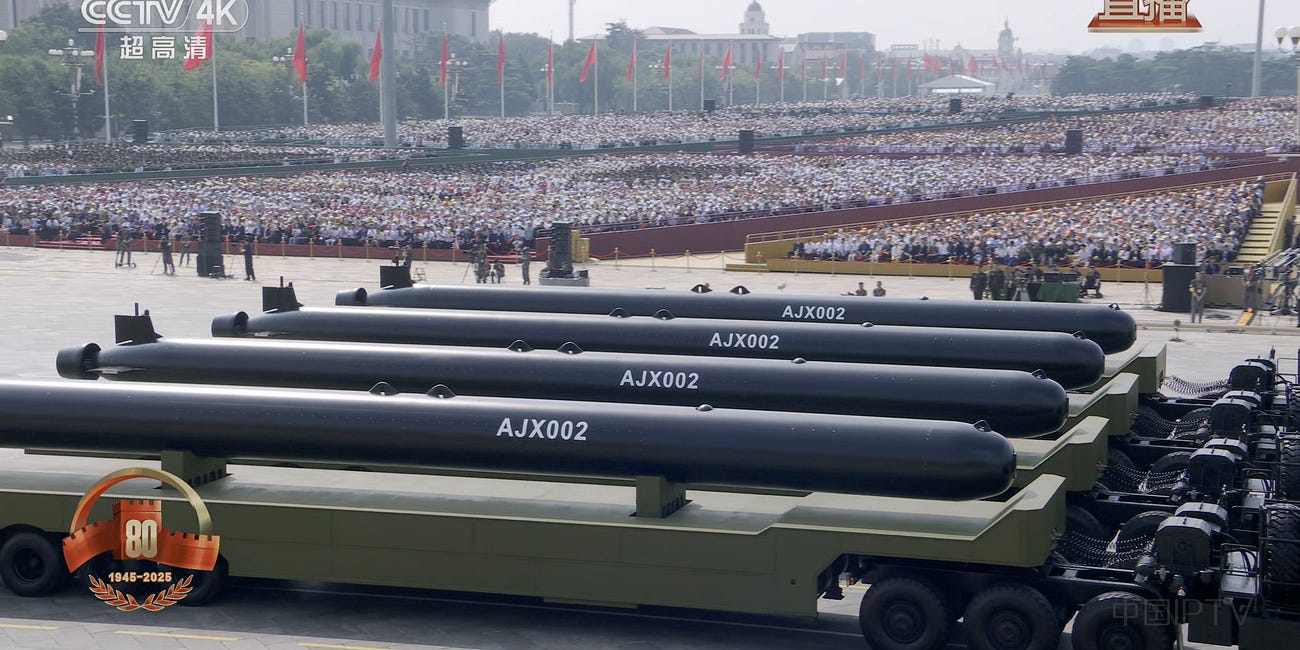Technological Change Offers China New Ways To Attack Terrestrial Targets In Australia
🇦🇺 🇨🇳 🇺🇸 Extensions
This extensions-themed post is an extension of material that has appeared in another newsletter/section and other parts of my website more generally. My newsletters/sections are primarily categorized by region and my posts can only appear in one newsletter/section at a time given how the Substack platform is configured. Extensions-themed posts are intended to highlight content posted in other newsletters/sections that may be highly relevant to readers who are primarily interested in other parts of the world.
In a recent post, I explained how a currently postponed mutual defence treaty between Australia and Papua New Guinea highlights the growing military challenges that China faces. Simply stated, China’s long-range conventional strike capabilities remain inadequate in both qualitative and quantitative terms for the type of conflict that China is increasingly likely to encounter in the Western Pacific, one in which the United States, Australia, and perhaps other countries are likely to operate from very distant bases in Papua New Guinea and elsewhere in the South Pacific more generally. What applies for Chinese strike capabilities against Papua New Guinea and the South Pacific, of course, also applies to China’s ability to attack targets in Australia in a context in which Australia not only hosts a significant peacetime American military presence but is likely to serve as a critically important deployment area for American military forces in any conflict with China.
Australia-Papua New Guinea Mutual Defence Treaty Highlights Growing Challenge For China's Military
Papua New Guinea recently celebrated the fiftieth anniversary of its independence. Among the foreign dignitaries in attendance was the Australian prime minister, who planned to sign a long-anticipated mutual defence treaty with his Papua New Guinean counterpart. While the signing of the mutual defence treaty, which would have brought Papua New Guinea in…
In a recent concepts-themed post, which engages in inherently somewhat speculative analysis with the aim of discerning what is and is not within the realm of possibility, I discussed one of the approaches that China may pursue with the aim of extending its long-range strike capabilities over the South Pacific. Specifically, China may turn to large long-range uncrewed surface vessels (USVs) and perhaps large, primarily surface-running, diesel-electric uncrewed underwater vehicles (UUVs), to serve as forward launch platforms for any number of strike munitions, including long-range propeller-driven fixed-wing strike drones and very long-range cruise missiles.
How China Can Extend Its Long-Range Strike Capabilities Over The South Pacific
Note: This concepts-themed post engages in inherently somewhat speculative analysis. I contend that any serious analysis must engage with the world both as it is and as it can be. Avoiding mindless empiricism requires cognizance of what is and what is not within the realm of possibility. Concepts-themed posts engage in this type of analysis.
The above post builds off on multiple recent posts in which I discuss how China can employ USVs and UUVs, among other systems, to attack targets located on the island of Taiwan. One such post focused specifically on the potential use of land-attack UUVs to attack terrestrial targets.
On China's Potential Use Of Land-Attack Configured UUVs Against Taiwan
Note: This concepts-themed post engages in inherently somewhat speculative analysis. I contend that any serious analysis must engage with the world both as it is and as it can be. Avoiding mindless empiricism requires cognizance of what is and what is not within the realm of possibility. Concepts-themed posts engage in this type of analysis.
Australia in general—and most of the parts of Australia that are home to the bulk of the country’s population, economic infrastructure, and military bases in particular—constitute an exceptionally distant target for China. Most of Australia is, as such, likely to remain as something of a relative sanctuary in which People’s Liberation Army (PLA) physical attacks are always likely to remain limited in scale insofar as ballistic missiles, boost-glide vehicles (BGVs, also known as hypersonic glide vehicles, or HGVs), and cruise missiles are concerned. Technological change, however, affords China many new options through which to dramatically increase the number of discrete aimpoints it can target across Australia and, importantly, do so at a fairly low cost (albeit with the trade-off of far more limited destructive effects). I expect USV- and/or UUV-launched strike munitions launched from positions in the Indian Ocean and perhaps Indonesia’s archipelagic waters to constitute an increasingly potent threat to Australia going forward, especially as it concerns the targeting of natural resource extraction, processing, and distribution infrastructure in the sparsely populated northern parts of Western Australia as well as the adjacent Northern Territory.
While there is presently no publicly available information indicating that the PLA has pursued or is pursuing USVs and/or UUVs to attack very distant terrestrial targets in this manner, observers should be cognizant that such an approach to long-range strike is not only very much within the realm of possibility but may arise in wartime even if such a capability set it does not exist in the PLA arsenal at the outset of a conflict. Furthermore, while some may scoff at the potential threat posed by what are likely to amount to strike munitions equipped with quite small and light warheads with limited destructive effects, it is important to consider how Australia will be transitioning from a world in which most of its territory is essentially secure from physical attack to one in which hundreds, if not thousands, of potential targets will fall within range of Chinese strike munitions, as well as how poorly prepared the Australia Defence Force currently is to defend against such attacks across such an immense costline and over such an immense surface area.




